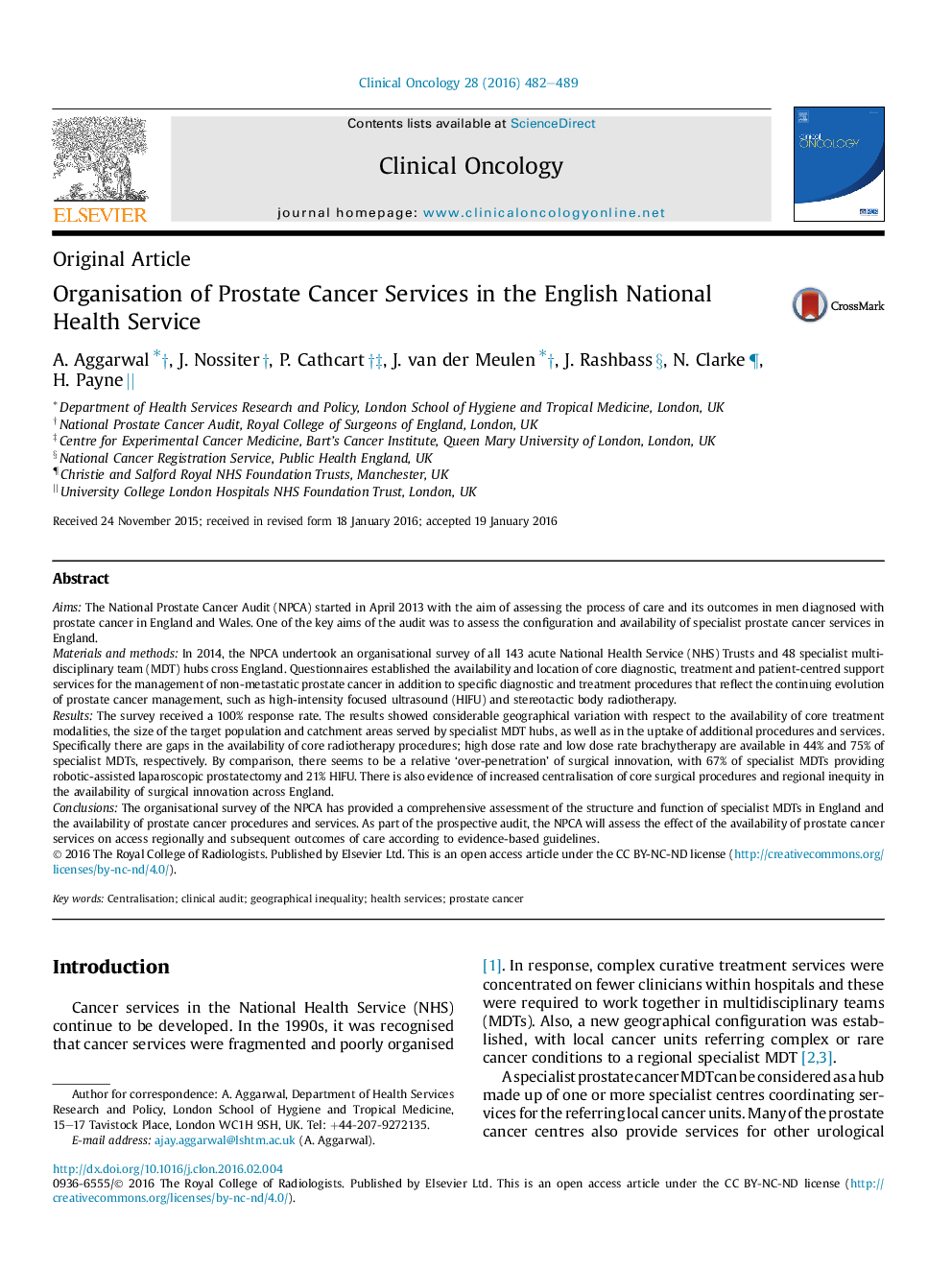| Article ID | Journal | Published Year | Pages | File Type |
|---|---|---|---|---|
| 5697893 | Clinical Oncology | 2016 | 8 Pages |
â¢Significant geographical heterogeneity exists in the structure and size of the target population and catchment area served by prostate cancer teams.â¢There continues to be a move towards greater centralisation of prostate cancer surgical services.â¢There is regional inequity across England in the availability of high and low dose rate brachytherapy, which may affect access.â¢The results suggest a relative 'over-penetration' of surgical innovation such as robotic-assisted prostatectomy.â¢Effective coordination between surgical and oncological teams is required to ensure access to core treatments and appropriate integration of innovation.
AimsThe National Prostate Cancer Audit (NPCA) started in April 2013 with the aim of assessing the process of care and its outcomes in men diagnosed with prostate cancer in England and Wales. One of the key aims of the audit was to assess the configuration and availability of specialist prostate cancer services in England.Materials and methodsIn 2014, the NPCA undertook an organisational survey of all 143 acute National Health Service (NHS) Trusts and 48 specialist multidisciplinary team (MDT) hubs cross England. Questionnaires established the availability and location of core diagnostic, treatment and patient-centred support services for the management of non-metastatic prostate cancer in addition to specific diagnostic and treatment procedures that reflect the continuing evolution of prostate cancer management, such as high-intensity focused ultrasound (HIFU) and stereotactic body radiotherapy.ResultsThe survey received a 100% response rate. The results showed considerable geographical variation with respect to the availability of core treatment modalities, the size of the target population and catchment areas served by specialist MDT hubs, as well as in the uptake of additional procedures and services. Specifically there are gaps in the availability of core radiotherapy procedures; high dose rate and low dose rate brachytherapy are available in 44% and 75% of specialist MDTs, respectively. By comparison, there seems to be a relative 'over-penetration' of surgical innovation, with 67% of specialist MDTs providing robotic-assisted laparoscopic prostatectomy and 21% HIFU. There is also evidence of increased centralisation of core surgical procedures and regional inequity in the availability of surgical innovation across England.ConclusionsThe organisational survey of the NPCA has provided a comprehensive assessment of the structure and function of specialist MDTs in England and the availability of prostate cancer procedures and services. As part of the prospective audit, the NPCA will assess the effect of the availability of prostate cancer services on access regionally and subsequent outcomes of care according to evidence-based guidelines.
